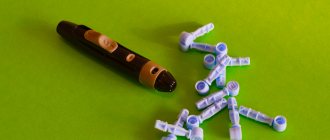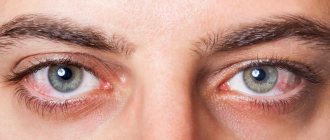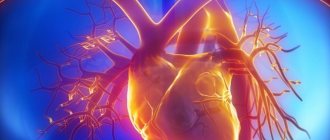Last update: 02/21/2021
Hemorrhagic diathesis is a category of diseases that are in one way or another associated with increased bleeding of the body.
If a person has hemorrhagic diathesis, deviations in the functioning of the hematopoietic system are observed, leading to disruption of the blood clotting process, frequent external, subcutaneous and internal bleeding. The diagnosis of hemorrhagic diathesis and their treatment should be carried out exclusively by a doctor - self-medication is inappropriate here.
Hemorrhagic diathesis: classification
There are two groups of hemorrhagic diathesis, caused by hereditary (primary) and acquired (secondary) deviations from the norm. In the first case, the main role is given to congenital genetic defects (for example, problems with platelet development, as well as abnormalities in plasma clotting factors).
In the second case, the trigger for the development of hemorrhagic diathesis is autoimmune diseases, taking certain medications, damage to the walls of blood vessels by toxins, and so on.
As for the mechanism of development of the disease, the following forms of hemorrhagic diathesis are distinguished:
- Caused by disruptions in the functioning of platelet hemostasis (autoimmune thrombocytopenia, thrombasthenia).
- Caused by a violation of the integrity of blood vessels (hemorrhagic vasculitis, Randu-Osler disease).
- Appeared as a result of a violation of the plasma hemostasis (congenital and acquired coagulopathies).
- Hemorrhagic diathesis caused by combined disorders (von Willebrand disease).
Treatment
Therapy varies for different diagnoses. We can conditionally combine the medical measures that are resorted to in this case into the following large sections:
Stop bleeding
Before starting treatment, it is necessary to deal with the main symptom - bleeding. For this purpose, tourniquets, pressure bandages, hemostatic sponges, and cold application are used.
Hemocomponent therapy
Those. transfusion of plasma, platelets or red blood cells. Such measures are resorted to only in cases of urgent need, when it is vital to compensate for the deficiency of coagulation factors. May have negative effects on the immune system.
Taking medications
These can be glucocorticoids for thrombocytopathies, vitamins for problems with vascular walls, medications that ensure normal blood clotting. A wide range of drugs are also used to combat the side effects of the main treatment.
Surgical intervention
Appeal to such measures may be due to:
- Repeated massive blood loss;
- Damage to blood vessels due to constant bleeding;
- Damage to joints.
Hemorrhagic diathesis in children
Quite often, hemorrhagic diathesis occurs in childhood. Viral and bacterial infections and medications (sulfonamides, butadione, quinine, dopegit, etc.) contribute to the development of the disease.
However, there are also congenital forms of diathesis, when problems with blood clotting can be caused by heredity.
You cannot let hemorrhagic diathesis take its course, even if you are sure that this is an age-related disorder that will go away over time. It is necessary to undergo a laboratory blood test and carefully monitor the manifestations of this functional abnormality.
Prevention
The following measures are recommended as preventive measures: strengthening the body’s defenses by hardening, playing sports or doing physical exercises, and organizing a balanced diet. It is also recommended to use multivitamin complexes or individual vitamins during the period of seasonal deficiency of these substances in food (in winter and early spring) and to maintain personal hygiene in order to prevent infection with viral or bacterial infections.
Hemorrhagic diathesis: causes
Most often, problems associated with bleeding are based on abnormalities in the process of blood clotting - the so-called disaggregation forms of thrombocytopathy. A tendency to hemorrhagic diathesis may be due to the presence of diseases such as leukemia, hemorrhagic vasculitis, hemophilia, and so on.
In addition, common causes of hemorrhagic diathesis include the following:
- Taking certain medications (for example, anticoagulants that thin the blood).
- Congenital pathologies of blood vessels and hematopoietic system.
- Violation of the permeability of the walls of blood vessels.
- Vitamin C deficiency.
- Deviations in the functioning of the liver and spleen.
- Some autoimmune, infectious and viral diseases.
- Damage to the vascular system during fever.
Possible negative consequences
In addition to anemia, the consequences of HD can be:
- Immune disorders;
- Loss of mobility of one or more parts of the body;
- Loss of vision due to retinal hemorrhages;
- Damage to internal organs, leading to deterioration of their functioning;
- Anemic coma.
This is a serious disease. It is important to see a doctor as soon as possible at the first signs, get diagnosed, and carefully follow the recommendations. If necessary, go to a clinic where you will be provided with the necessary nursing care and timely treatment.
Symptoms of hemorrhagic diathesis
The clinical picture usually looks like this:
- The appearance of reddish-pink rashes on the body and mucous membranes.
- Hematomas of unknown nature.
- Subcutaneous bleeding.
- Ulcers may appear.
- Presence of blood in the urine.
- Abdominal pain, nausea, vomiting.
- Hemorrhage in the joint cavity is also possible.
- Redness of the retina.
- In especially severe cases, hemorrhages into internal organs occur.
As for the types of bleeding with a particular type of hemorrhagic diathesis, we can distinguish:
- Hematoma type. It manifests itself as painful, intense hemorrhages in both soft tissues and joints - typical for hemophilia A and B.
- Microangiomatous type. Most often occurs in the presence of a hereditary hemorrhagic form of diathesis. Manifests itself in the form of frequent recurring bleeding.
- Mixed type. The clinical picture with this type of bleeding is the appearance of a small red rash and extensive hematomas.
- Petechial-spotted (bruised) - characteristic of thrombocytopenia, thrombocytopathies and some bleeding disorders (exceptionally rare) - hypo- and dysfibrinogenemia, hereditary deficiency of factors X and II, sometimes VII;
- The vasculitic purpuric type is characterized by hemorrhages in the form of a symmetrical pinpoint rash, possibly associated with nephritis and intestinal bleeding; observed in infectious and immune vasculitis.
On our website you can find photos of hemorrhagic diathesis that clearly demonstrate the different types of manifestation of this reaction of the body.
Clinical picture
The main manifestation of hemorrhagic diathesis is bleeding. Depending on their nature, the following classification is proposed:
Capillary (microcirculatory)
They are characterized as painless small superficial hemorrhages into the skin and mucous membranes. This manifests itself as bruises, petechiae, nasal and uterine bleeding, and bleeding gums.
Hematoma
We are talking about extensive hemorrhages in the patient’s joints, muscles, and soft tissues. The result is very painful hematomas that can lead to tissue dissection, deforming arthrosis, and fractures. This type of bleeding is very typical for hemophilia.
Capillary-hematoma (mixed)
This type is characteristic of DIC syndrome, von Willebrand disease, and overdose of anticoagulants. It is a combination of small external hemorrhages, such as microcirculatory ones, and large subcutaneous hematomas.
Vasculitic purpuric
They look like small pinpoint rashes on the arms, legs, thighs, and torso. As a rule, it is distributed symmetrically throughout the body. Accompanied by mild swelling. Residual pigmentation after such rashes remains for a long time. This symptom is characteristic of hemorrhagic vasculitis.
Angiomatous
This includes persistent, recurrent bleeding of one or two localizations. Most often nasal, but sometimes gastrointestinal, pulmonary. A special case of angiomatous hemorrhages is also hematuria - blood in the urine.
A natural consequence of blood loss is often anemia, which is accompanied by increased fatigue, dizziness, pale skin, weight loss, and fever.
Hemorrhagic diathesis: treatment
Before starting treatment, it is important to successfully diagnose. This may require the following:
- Conducting general laboratory and biochemical tests of blood and urine.
- Determination of the time required for blood clotting and the duration of bleeding. Carrying out a coagulogram.
- Carrying out immunological, as well as thromboplastin generation, prothrombin and thrombin tests.
After passing these examinations, the doctor can make an accurate diagnosis and prescribe appropriate treatment. It may include taking certain medications (for example, iron supplements, corticosteroids) and vitamin complexes and supplements, as well as more radical methods: for example, joint puncture, transfusion of plasma or red blood cells, or surgical removal of the spleen.
When diagnosing hemorrhagic diathesis, it is important to carry out preventive measures that can strengthen the body and increase its protective functions. These include hardening, moderate physical activity and exercise, a balanced diet with a carefully selected vitamin composition. In addition, it is especially important to protect the body from the possibility of infection with viral diseases in the autumn-spring period. To do this, it is recommended to take specially selected vitamin complexes.
Pharmacy products from La Cree cannot be considered fully medicinal, but they can provide high-quality care for skin damaged by hemorrhagic diathesis. Since La Cree skin products are made from natural ingredients and do not contain dyes, parabens or fragrances, creams and gels of this brand help to delicately cleanse the skin and relieve signs of redness and irritation.
Diagnostics
Hemorrhagic diathesis is a variety of diseases with similar symptoms. Moreover, these diseases are very different in etiology, consequences, possible complications, and treatment methods. Therefore, it is very important to correctly make a differential diagnosis. To do this, experts resort to:
- Physical examination. This is necessary to determine the type of hemorrhage and its location. Record the presence or absence of swelling, joint pain, etc.
- Laboratory tests. A general blood test can reveal a decrease in the number of red blood cells, platelets, and a drop in hemoglobin levels. Urine and stool analysis is designed to detect hidden hemorrhages, if present. Biochemical blood testing makes it possible to comprehensively assess the parameters of its coagulation.
- Instrumental diagnostics. For example, trepanobiopsy, sternal puncture. These are procedures to obtain a sample of bone marrow to analyze its hematopoietic function.
Based on the characteristics of the course of the disease, other diagnostic procedures may be prescribed: Coombs test, functional tests for capillary fragility, kidney ultrasound, liver ultrasound, etc.
To make a correct differential diagnosis, it is desirable to involve specialists of different profiles in the process: immunologist, rheumatologist, hematologist, gynecologist.
Clinical researches
The effectiveness, safety and tolerability of La-Cri products have been clinically proven. The products are recommended by the Union of Pediatricians of Russia; many products can be used in children from birth.
Sources:
- B.A. Shamov, I.G. Safiullina, A.B. Beshimova, T.B. Shamov, Differential diagnosis of atopic dermatitis, journal of Practical Medicine, 2011 https://cyberleninka.ru/article/v/differentsialnaya-diagnostika-atopicheskogo-dermatita
- Fokina R.A., Atopic dermatitis: stages of development of classification forms, Siberian Medical Journal, 2007 https://cyberleninka.ru/article/v/atopicheskiy-dermatit-etapy-razvitiya-klassifikatsionnyh-form
- A.N. Pampura, A.A. Chuslyaeva, Modern approaches to the treatment of atopic dermatitis in children https://cyberleninka.ru/article/v/sovremennye-podhody-k-terapii-atopicheskogo-dermatita-u-detey
Photos of diathesis
Photo album on the disease
Symptoms of diathesis in children and adults
Diathesis can appear at any age. The main manifestation is constant severe itching in combination with local skin manifestations . The disease is characterized by a relapsing course.
Diathesis can appear at any age.
The first signs of the disease appear at an early age. They are preceded by the appearance of scales on the scalp and eyebrows (gneiss). One of the main and main manifestations of dermatitis in young children is redness and dryness of the skin of the cheeks. A characteristic feature is that the nasolabial triangle and nose remain untouched by allergic rashes. If parents do not take any measures, the process progresses. Lesions also appear on other parts of the body: scalp, ears, torso, extensor surfaces of the limbs. Often the rash can be located on the buttocks, around the anus. Without treatment, the process progresses, and small blisters appear against the background of redness and swelling of the skin, which quickly collapse. As a result, wounds appear that become covered with crust and scales. After peeling off the crusts, smooth, bright pink skin remains at the affected areas. Sometimes, against the background of the described rash, small nodules may also appear on the skin, which rise above the skin level. on the skin are usually located symmetrically .
With age, many patients experience clinical transformation of skin rashes. In adults they look different and are located in different places. The lesions look like thickened and dry skin. They are located on the neck, elbow and popliteal folds, on the back of the hands, in the axillary and inguinal folds, sometimes around the mouth, eyes and in the genital area. Characterized by intense itching of the skin, which intensifies at night. Because of this, sleep is disturbed, the person becomes irritable and moody. Constant itching leads to the fact that a child or adult scratches dry areas of the skin and a wound surface appears that becomes covered with crusts.








